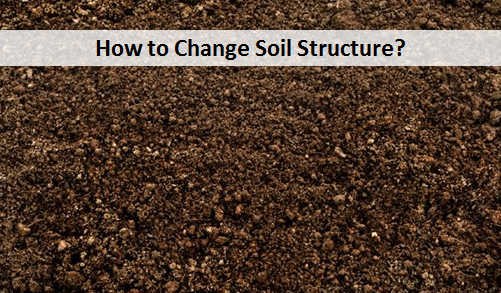Organic Gardening
How to Change Soil Structure?
If you are not sure how to change soil structure, then you probably want to know what benefits you will reap by doing so. First of all, in order for gardens and lawns to grow healthily, the soil must be rich in nutrients. Without this vital element, plants cannot survive. Organic matter in the soil also helps to keep it healthy because it provides the necessary protection from the effects of time and weather. However, with no nutrients in the soil and a major deficiency of organic matter, the soil is not able to fulfill its function, which leads to soil compaction and eventually to unhealthy environments.
1. Changing Type Of Micro Organism Living In It
The best way to make your soil more fertile is by changing the type of organisms living in it. This can be done through mechanical means, such as adding humic acid or potassium nitrate to the soil. Other methods include aerating the soil, making the most of your existing topsoil and using cover crops such as alfalfa or clover. However, the most popular method of changing the soil structure is through natural composting. You can simply place greenhouses or other forms of artificial structures over your garden and let the grass go to work composting the organic matter in the soil, converting it into nutrients.
2. Improves Oxygen
How to alter soil structure to improve your soil? By aerating the soil, you improve the amount of oxygen that can penetrate the soil and get to the various parts of the root system. When the roots of grass reach down into the soil, they can find nutrients to feed on. They also get to stretch, so that the roots have plenty of room to expand even further, while aeration also breaks up compacted soil, which allows water and other elements to penetrate the soil properly.
3. Alfalfa Can Be Used To Change Soil Structure
There are many types of cover crops available, which you can use as mulch on your garden. One of the best ways to show how to change soil structure naturally is with alfalfa. Alfalfa is a grass that grows well in many types of soils and has very few requirements for maintenance. This means that you don’t have to spend a lot of time and money on maintaining the lawn, and in fact, it can grow very quickly once it has established itself.
4. Straw Fertilizer
Another great option when it comes to how to change soil structure naturally is straw. As well as being used for aesthetics, straw can be an excellent fertilizer. It will improve both the fertility of the soil and its colour, allowing it to feed more and produce a higher quality crop. There are several types of straw available, so it is important to be able to recognise the most suitable for your needs.
5. Three Types Of Altering Soil
Soil that is too hard can cause problems with your plants. Soil that is too soft can make it susceptible to diseases and pests. There are three main types of soil; sandy, silt-feed and clay. Each type has its own requirements for planting, growth and nutrition and can affect the structure.
6. Look For Plant Life In Your Area
You should look at the plant life in your area and assess whether it is suitable for a certain type of soil. For example, if you are looking to grow plants that need a lot of water, you should look at clay soils. However, if you want to grow plants that are disease resistant and highly nutritious, you should look at silt-feed. This will ensure that your plant roots get the right nutrition.
7. Conclusion
It is possible to learn how to change soil structure naturally by using your hands. You can experiment by trying different kinds of soil and see which ones work best. However, unless you live in an area that receives plenty of sunlight, it may be impossible to change the texture of your soil with your bare hands. Therefore, learning about the natural soil characteristics will help you make the right choices when choosing what type of soil to grow.

